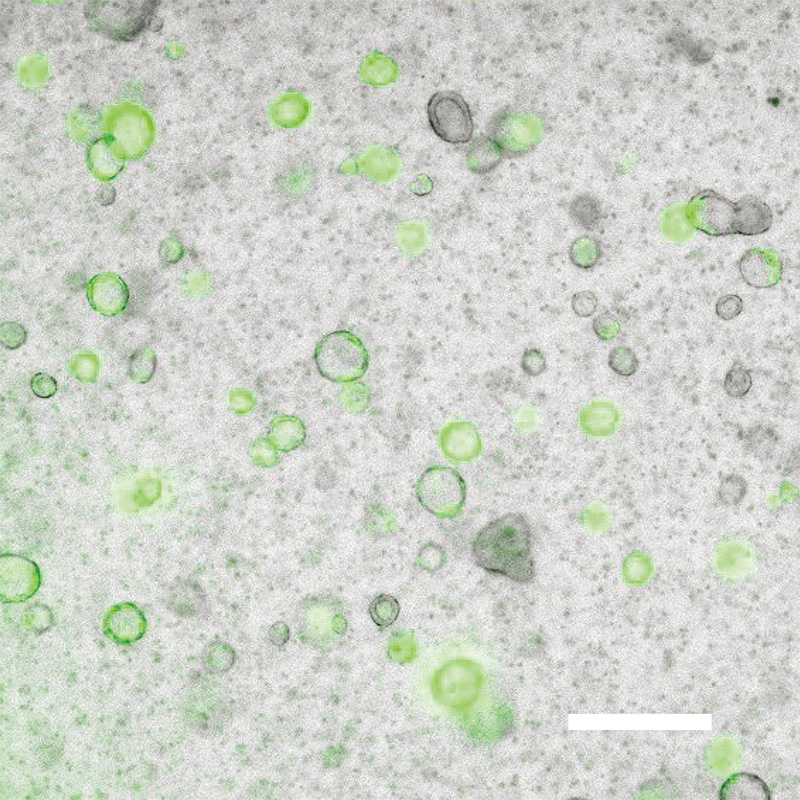
Research Activities
Research Activities
Publications
November 02, 2022
Successful generation of human iPS cell-derived mesenchymal cells capable of producing alveolar organoids
Breathing intakes oxygen and expels carbon dioxide, and this gas exchange takes place in the alveoli in the lungs. Alveoli contain type 1 alveolar epithelial cells (AT1), which are involved in the actual gas exchange, and type 2 alveolar epithelial cells (AT2), which produce surfactants to prevent a collapse of the alveolar space. The interaction between epithelial cells and mesenchymal cells is essential for alveolar development.
In a previous study, the research group generated alveolar organoids containing AT1 and AT2 cells by co-culturing with human fetal lung fibroblasts (HFLFs) and used them for disease modeling. This new study aimed to create iPS cell-derived mesenchymal cells (iMES) that can induce alveolar epithelial cells, without using HFLFs.
The researh group successfully generated iMES that can induce alveolar organoids (iMES-AOs) comprising not only AT2 cells but also AT1 cells, pulmonary neuroendocrine cells, and ciliated cells. Furthermore, they demonstrated that iMES-AOs could be used in influenza virus and SARS-CoV-2 infection models.
In the future, iMES-AOs are expected to be used in research on lung development and regenerative medicine, and respiratory disease models.
The results of this study were published online in Cell Reports Methods on September 19, 2022.

Microscopic images of iMES-AOs generated by 3D co-culture of iMES with lung progenitor cells derived from iPS cells. Green indicates AT2 cells; Scale bar = 500 μm.
Paper Details
- Journal: Cell Reports Methods
- Title: iPSC-derived mesenchymal cells that support alveolar organoid development
- Authors: Koji Tamai1, Kouji Sakai2,3, Haruka Yamaki1, Keita Moriguchi4, Koichi Igura1, Shotaro Maehana5,6,7, Takahiro Suezawa4, Kazuaki Takehara8,9, Masatoshi Hagiwara10, Toyohiro Hirai1,
Shimpei Gotoh1,4,11* - Author Affiliations:
- Department of Respiratory Medicine, Graduate School of Medicine, Kyoto University
- Department of Veterinary Science, National Institute of Infectious Diseases
- Department of Virology 3, National Institute of Infectious Diseases
- Department of Drug Discovery for Lung Diseases, Graduate School of Medicine, Kyoto University
- Department of Environmental Microbiology, Graduate School of Medical Sciences, Kitasato University
- Department of Microbiology, School of Allied Health Sciences, Kitasato University
- Regenerative Medicine and Cell Design Research Facility
- Laboratory of Animal Health, Department of Veterinary Medicine, Faculty of Agriculture, Tokyo University of Agriculture and Technology
- Laboratory of Animal Health, Cooperative Division of Veterinary Science, Graduate School of Agriculture, Tokyo University of Agriculture and Technology
- Department of Anatomy and Developmental Biology, Graduate School of Medicine, Kyoto University
- Center for iPS Cell Research and Application (CiRA), Kyoto University






















